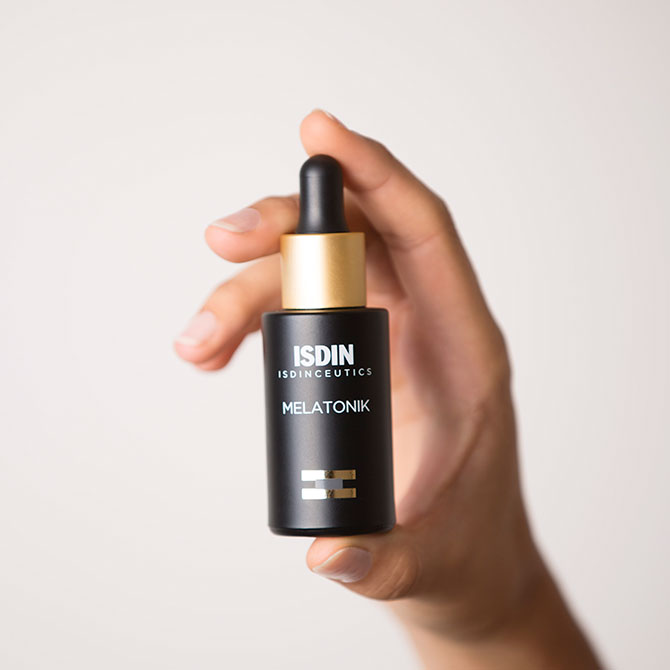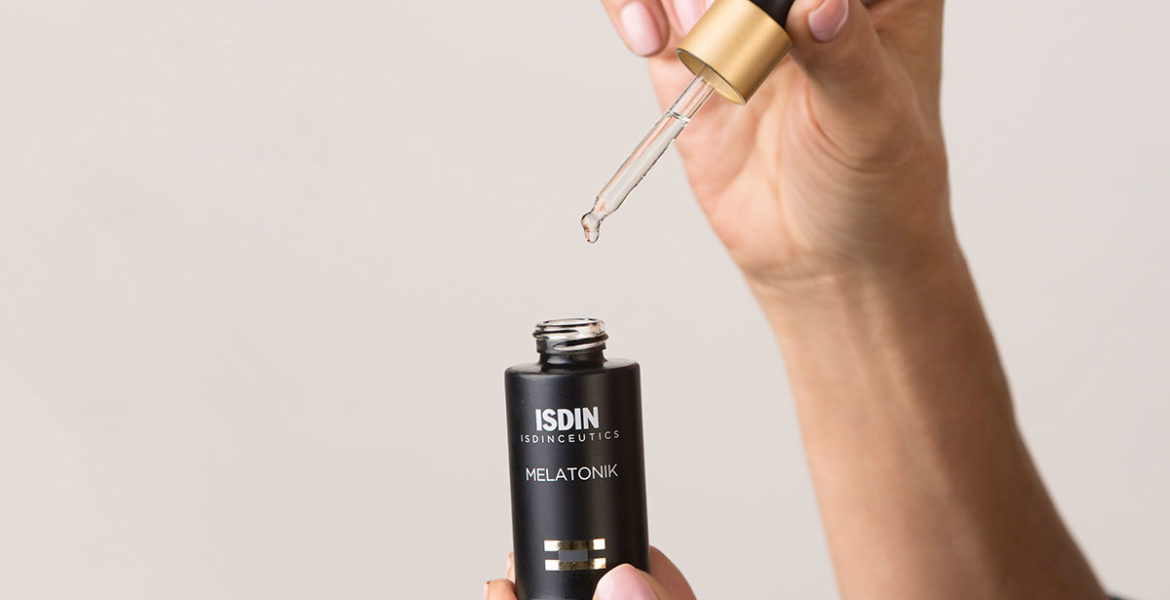We’ve all heard of the power of beauty sleep, but just how real is it? Dreaming happily away at night while tired-out skin works its very own miracles sounds like it’s just too good to be true. Here’s the deal: Beauty sleep is absolutely not a myth – the science has spoken, and our skin is indeed able to repair itself best at night, thanks to its natural regeneration mode. Let’s get into how your skin really repairs itself at night, and how melatonin can lend a helping hand.
Table of Contents
Your skin in the daytime
During the day, your skin is exposed to the elements and is directly affected by your surrounding environment: UV radiation, pollution, and tobacco all have an effect on your skin’s health. Add tiredness and lack of sleep into the mix, along with the stress of day-to-day life, and you have a recipe for skin which shows signs of aging much faster than it should. Your skin is on guard from these external stresses during the day, fighting UV rays and free radicals through antioxidant and melanin production.
Your skin at night
At night, your skin switches from “protect” mode to “repair”, and it’s time for it to recover from the day’s stresses. Melatonin and human growth hormone (HGH) production are boosted, which in turn accelerates skin regeneration and the production of antioxidant enzymes. Cortisol, the hormone produced in response to stress, can also be lowered through a good night’s sleep. Higher levels of cortisol may correspond to skin discoloration, reduced elasticity, and development of fine lines.
As if all of that wasn’t amazing enough, your skin is also more receptive to topical skincare products at night, as it’s more permeable. While this means it’s also more prone to water loss, it’s great news, as it means you can really make the most out of the natural renewal process and maximize hydration through your skincare, boosting the regeneration process and helping to fight early signs of aging.

What is melatonin?
Melatonin is a naturally occurring hormone, and its main job is to help regulate the sleep/wake cycle. The production of melatonin increases at night and helps to promote sleep. Topical melatonin is different, though. Research on topically applied melatonin is now showing that it works while you sleep to help prepare your skin’s natural defenses for the coming day.
Research is showing that melatonin acts as an antioxidant, working to reduce the harm inflicted on the skin during the day. Topical melatonin is also important in a routine with an anti-aging focus, as it helps to protect against free-radical induced cell damage. Levels decrease with age, so using topical melatonin in your skincare routine can help supplement this natural depletion.
How does melatonin work when applied to the skin?
Melatonin penetrates the skin and activates the synthesis of antioxidant enzymes. These antioxidant enzymes work to block free radicals and therefore repair oxidative damage to the skin. This means melatonin is a major skin protectant, from free radical scavenging to DNA damage repair.
How can I include melatonin in my skincare routine?
As melatonin has been demonstrated to be effective in reinforcing the skin against oxidative stress, the best time to introduce topical melatonin is at night, when your skin switches to repair mode. Melatonin’s indirect antioxidant effect triggers enzymes which help to repair the oxidative stress your skin has gone through during the day – think UV rays, pollution, and other environmental stressors that your skin meets on a daily basis.
In turn, signs of aging triggered by oxidative stress such as fine lines, wrinkles, and loss of elasticity, can be significantly improved – supporting healthier skin.
The benefits of melatonin in your skincare routine
The Isdinceutics nighttime repair routine features melatonin as its star ingredient. The power of melatonin is harnessed in each step, designed to give skin a regenerative helping hand, so you wake up to better skin every day. The nighttime repair steps can be used individually, or for best results, paired together, for the full melatonin skincare experience.
“Studies on melatonin show that this hormone, found naturally in the body, is scientifically proven to repair skin while you sleep, help erase visible signs of skin aging and improve skin firmness. I love that ISDIN has really pioneered its use in skincare.”
Dr. Michelle Henry

How to include melatonin in your skincare routine
Step one: Eye cream
After cleansing, reach for eye cream, as this is the ideal time to help the ingredients penetrate the skin better and provide those crucial refreshing, revitalizing effects! If you’re looking for a melatonin eye cream, try Isdinceutics Vital Eyes, which helps protect the delicate under eye area from free radical damage, diminishing the appearance of crow’s feet and fine lines around the eyes.
Step two: Serum
If you’re wanting to include a specific ingredient in your skincare regimen, serums are the natural choice, as they generally offer more concentrated formulas to target specific concerns. Isdinceutics’ Melatonik is a melatonin-rich serum which teams the nighttime repair ingredient with vitamin C and bakuchiol to help restore skin vitality and elasticity for radiant, healthy skin.
Step three: Moisturizer
Now you’ve done all the good work, it’s time to seal it in with a nurturing, comforting moisturizer that soothes and calms the skin. If you’re looking for a melatonin night cream, try Isdinceutics Age Contour Night, which offers a restorative formula designed for the face and neck. In addition to hydrating and calming the skin, it utilizes melatonin to help stimulate natural antioxidant defenses and reduce visible signs of aging.
The answer to the most effective beauty sleep? Melatonin. Team it with at least 7-9 nightly hours of catching Z’s, and you’ll be sure to wake up looking more rested and refreshed than ever before.
Sources and references:
Chen, Y., Lyga, J. Brain-Skin Connection: Stress, Inflammation and Skin Aging. In Inflammation & Allergy Drug Targets (2014); 13(3): 177-190.
Matsui, MS., Pelle, E., Dong, K., Pernodet, N. Biological Rhythms in the Skin. In International Journal of Molecular Sciences (2016); 17(6): 801.




